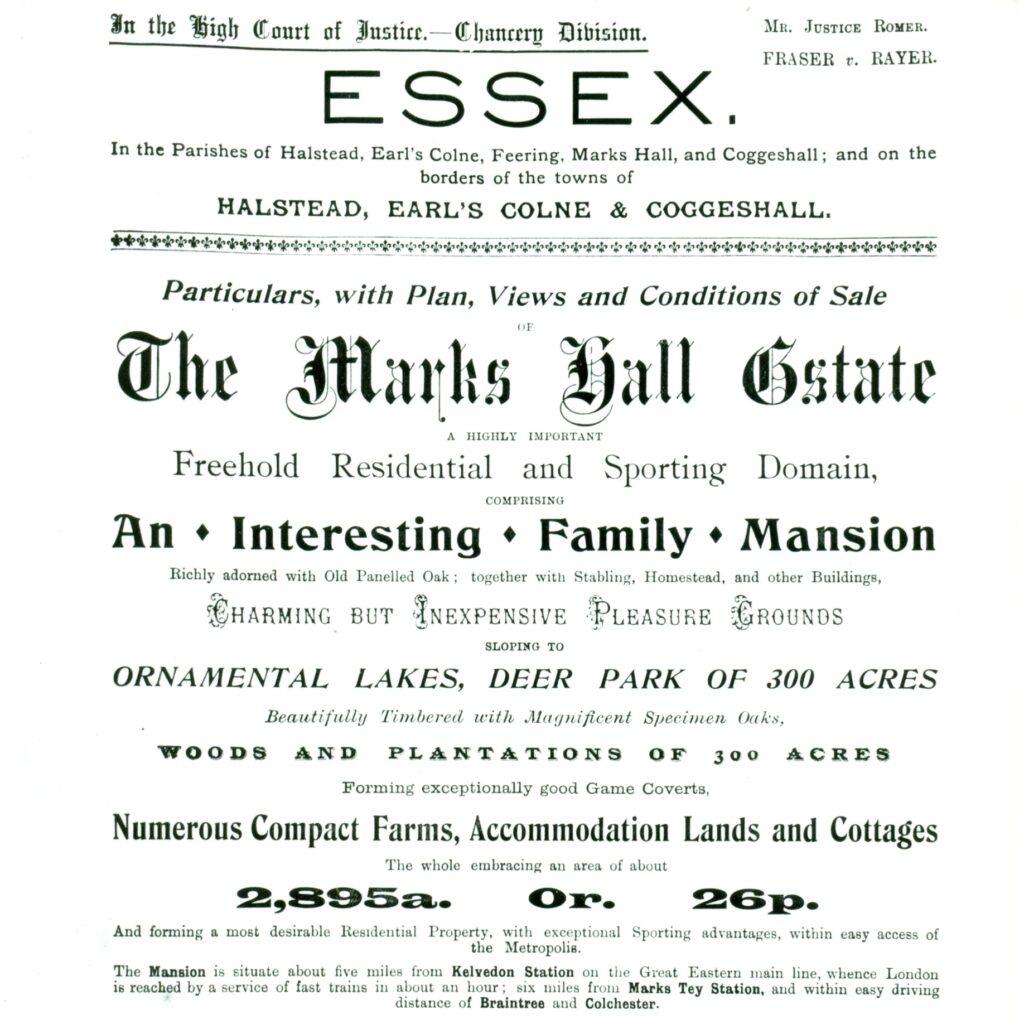What’s in a name?

From Markshall to Marks Hall and back again
You may have noticed that we’ve changed our name. Marks Hall Estate is now ‘Markshall Estate’, a small change which has a lot of history and heritage behind it. If you’re wondering why, here’s the story of our name through the centuries.

Records for Markshall Estate go back to the Domesday Book of 1086, under the Anglo-Saxon spelling of ‘Mercheshala’. Tenant-in-chief at that time was Hugh de Montfort, a Norman and longtime ally of William the Conqueror, and his tenant Nigel de Hugone was in charge of the assets, which included woodland, meadows, livestock and beehives. Resident tenants were the de Merc family.

From one Hugh to another
Hugh de Montfort fell out of favour with Henry II and his land holdings were passed to Hugh de Essex, younger son of Henry of Essex and standard bearer for the king. During an expedition in Wales, Hugh de Essex fled from battle and his lands were confiscated. The land was formally passed to its tenants, the de Mercs, who renamed themselves ‘Merkshall’, after the land. In the middle ages, the new spelling ‘Markshall’ appeared in official records for the land, and the family.

From the Markshalls to the Honywoods
The Markshall family owned the estate for four hundred years until the 16th century, when the land changed hands twice. Parliamentarian, Robert Honywood, bought the estate in 1605 and replaced the existing manor house with an impressive Jacobean style brick mansion, which he named ‘Marks Hall’, splitting the name of the land up to name his house. The lavishly decorated mansion would be the home of the prominent Honywood family for four hundred years. During the English Civil War, Thomas Honywood commanded a regiment of Roundhead soldiers who used the land as a base of operations. Following the siege of Colchester, it’s likely that Thomas put his soldiers to work on the estate, digging two large lakes, which exist to this day, adjoining a fashionable, expansive deer park.
Through the time of the Honywoods, the estate was variously referenced on maps as ‘Mark Hall’, ‘Marks Hall’ and ‘Markshall Park’. Documents from this time refer to the ‘Honywoods of Markshall’.

Purchase by Thomas Phillips Price
In 1875, Frances Emma Honywood began an ambitious overhaul of the mansion house, including a significant expansion of the chapel. This plunged the family in to financial peril, and although the Honywoods held onto the estate after Frances’ death in 1895, the entire estate was auctioned off two years later to cover their mounting debts. The sale of the estate was advertised using both spellings.
Welsh industrialist and politician Thomas Phillips Price then purchased the land, becoming the estate’s last private owner. In his will of 1927, he formalised his plans to leave his estate as a gift to the nation for the benefit of agriculture, forestry, and arboriculture. Parliamentary records, maps and building documentation from this time use the name Markshall. The estate is part of the parish of Markshall, and was formally joined with the local parish of Coggeshall in 1933, when Mary Phillips Price had the chapel removed.

Why go back to the old name now?
As you can see, the name Markshall carries a lot of history. Like most heritage sites, we want to celebrate our long past, honour and explore our roots, and tell our stories through our website, map, guidebook, and on-site interpretation for many years to come.
Although other names have been used, our historic name is a huge part of our land’s heritage and identity since Saxon times, and as Markshall Estate evolves, we are pleased to say it will be a big part of our future.
More from the blog
See more
-

Discovering the Diverse Habitats of Markshall: From Mighty Oaks to Hidden Bats and Graceful Deer
Markshall is a unique landscape that spans woodlands, gardens, and historic structures, each offering a vital refuge for an extraordinary […]
-

Update from William the New Markshall Senior Horticulturist:
Hello everyone! I’m excited to share some updates from my first month as the Senior Horticulturist at Markshall. It has […]
-

Meet Markshall’s Irises
The irises are currently in bloom, gracing the long herbaceous border of the Walled Gardens and the borders of the […]